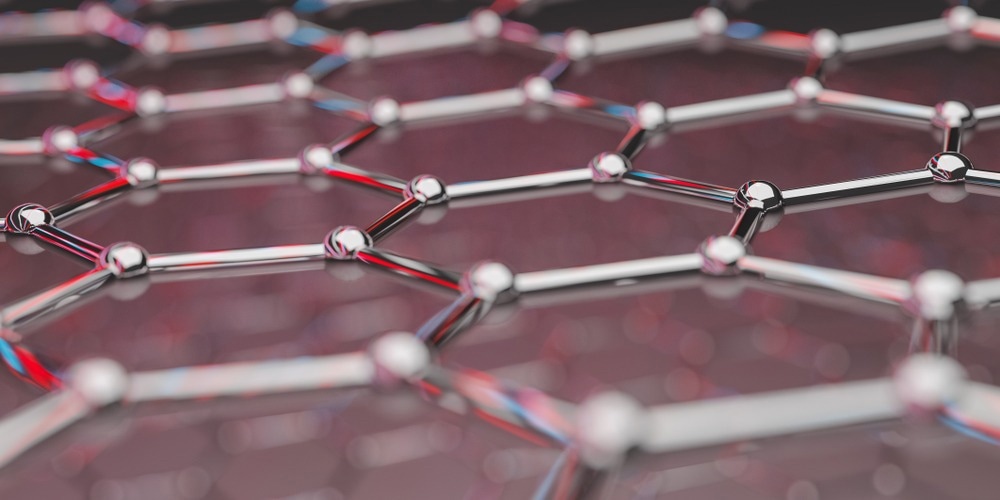Graphene took some time to mature, but in the last five years, many graphene startups and established industrial enterprises have begun to use graphene in commercial products such as composites, batteries, filtration, sensors, and thermal management.

Image Credit: Production Perig/Shutterstock.com
Nonetheless, a crucial question for businesses to ask their suppliers is, “What material is this?” Graphene is not a single material but a family of materials produced through various methods, each with unique structural and chemical properties. The purpose of this article is to shed light on the significance of international standards in assuring buyers of quality and performance characteristics.
The Need for International Standards for Graphene Market
End users who wish to improve their products by incorporating graphene are unable to compare and select the appropriate material because hundreds of companies worldwide sell materials containing various forms of carbon, label them as "graphene," and manufacture them in a variety of ways.
Second, due to inconsistency in material production, acquiring the same type of material from the supplier on multiple occasions can be difficult. Third, there is a lot of confusion in graphene terminology and confusion regarding the material produced, such as graphene vs. reduced graphene oxide (r-GO).
Finally, and perhaps most importantly, a significant portion of commercially produced graphene is a mixture of graphitic particles or impurities with properties distinct from graphene, also known as fake graphene. This will harm the graphene market in the long run, affecting the rest of the distribution chain.

Image Credit: ArtisticPhoto/Shutterstock.com
What Are the International Standards for Graphene?
To allow industry and end users to have confidence in the values they are provided, the International Organization for Standardization (ISO), led by the National Physical Laboratory (NPL), published a documentary standard. This document provides a benchmark for graphene-related basic terminology, materials specification, production method, and characterization, health and safety, and applications of commercially available graphene materials to correctly measure and label them.
The terminology standard (published in 2017) draws a sharp distinction under the debate over what exactly constitutes graphene, defining it as precisely a single layer of carbon atoms, sometimes referred to as monolayer or single-layer graphene or pristine graphene, while graphene with 2–5 layers is referred to as few layers graphene, 5–10 layers as multi-layer graphene, and beyond 10 layers as graphite.
In addition to the number of layers, terminology documents cover graphene-related materials such as: Graphene oxide (GO), is a chemically modified graphene with 65% carbon and 35% oxygen by weight, with C/O atomic ratios of approximately 2, depending on the method of synthesis. Reduced graphene oxide (rGO) is a much-reduced oxygen content with approximately 95% carbon, depending upon the different reducing agents.
Graphene nanoplatelets (GNP) typically have thicknesses ranging from 1 nm to 3 nm (typically more than 10 layers) and lateral dimensions ranging from 100 nm to 100 μm.
Nanotechnology Terminology Part 13: Graphene and Related Two-Dimensional Materials contains the complete list of standards for graphene-related basic terminology. The terminology standards will assist the global industry in describing the material with the same words to avoid any confusion between buyer and supplier.
It can be difficult to determine whether a material contains graphene or not (since, in powder form, everything looks like a black powder). In response to this issue, ISO published a list of methods in 2021 for characterizing graphene from powders and dispersion.
The International Standards for Graphene specify which parameters to use and how to interpret the results. The standard is divided into two parts: structural characterization (how many layers, thickness, and size of the graphene) and chemical characterization (what impurities and functional groups are attached to the graphene).
To that end, a joint ISO/IEC terminology standard covering nomenclature, production methods, properties, and characterization was published.
International Standards for CVD Grown Graphene
Scientists from the United Kingdom's National Physical Laboratory (NPL) released data on the comparability of Raman spectroscopy measurements of CVD-grown graphene using the same measurement protocol across different institutes and laboratories.
While many of the reported Raman data were relatively consistent, some exceptions occurred due to the instrument and data analysis differences. These differences resulted in inconsistent reports of graphene coverage, peak widths and peak intensity ratios.
The relative difference reported in the 2D and G peak intensity ratios (I2D/IG) was up to 200%, according to their report. The standard deviation for FWHM of 2D values reported by different software packages was also shown to be 15 times larger for Lorentzian fit functions.
To avoid this inconsistency, this study suggested using a certified reference material for Raman spectrometer relative intensity calibration. In addition, the study recommended using a pseudo-Voigt function rather than a Lorentzian function when fitting the Raman 2D peak. According to the researchers, this method reduces inconsistency significantly, allowing the graphene community to have more reproducible and comparable measurements.
Future Perspective
Some industries may produce products with lower quality, defects, or different material qualities due to using different raw materials and production methods. In these cases, instead of marketing the material as graphene, the supplier should state whether it is FLG, GNP, or graphite.
For instance, there are some applications where instead of graphene has much more significance in terms of performance, for example, in applications like composites and rubber tires; therefore, instead of marketing it as graphene and misleading the customer, call it what it is. The goal of the ISO standard is to establish terminology and measurement standards that will ensure the same material is measured and named consistently worldwide.
References and Further Reading
Turner, Piers, et al. (2022) International interlaboratory comparison of Raman spectroscopic analysis of CVD-grown graphene. 2D Materials. Available at: https://doi.org/10.1088/2053-1583/ac6cf3
Charles A. Clifford et al. (2021) The importance of international standards for the graphene community, Nature Reviews Physics. Available at: http://dx.doi.org/10.1038/s42254-021-00278-6
Disclaimer: The views expressed here are those of the author expressed in their private capacity and do not necessarily represent the views of AZoM.com Limited T/A AZoNetwork the owner and operator of this website. This disclaimer forms part of the Terms and conditions of use of this website.